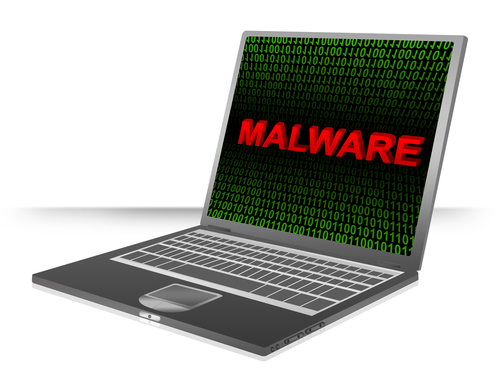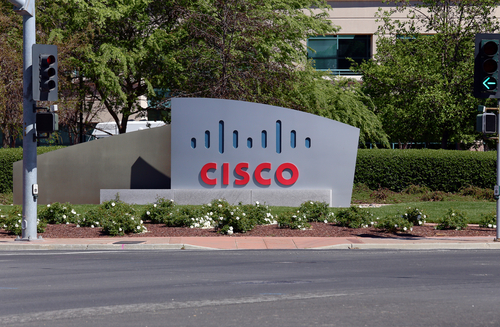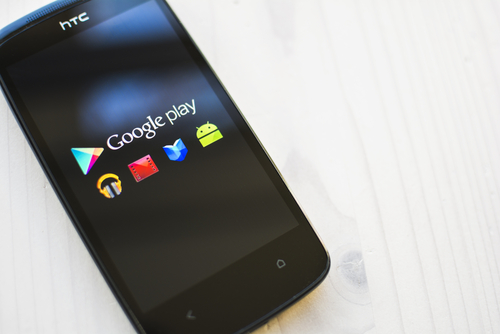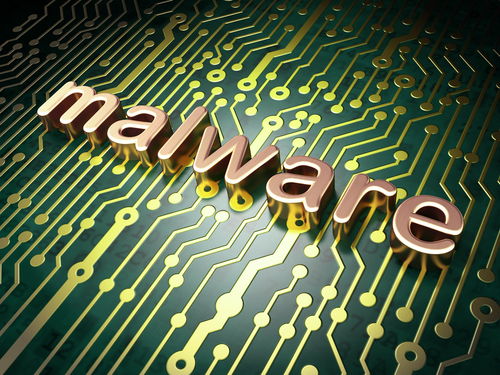July 30th, 2014

Even with up to date security tools in place, every internet user runs a constant risk of being hacked or infected with malware. Early detection of these issues can save you from a devastating outcome. InfoWorld recently published an article detailing some of the most common and easily spotted signs of malware infections and the action you should take to combat them. Many times, the suggested action is to restore your system to the last known safe point so it’s important that you’re regularly backing up your devices and creating good restore points.
While there’s fewer instances of this tell-tale sign of an infection than in the past, it remains one of the most recognized. Fake antivirus messages can pop up from your desktop or in a browser window. They claim to warn you about malicious files, but in reality the damage has already been done. Malware has already been added to your system. The message exists to entice you into more trouble. Clicking on it often opens a browser window that asks users to purchase security tools. These sites look legitimate, but are actually just a means to steal credit card numbers. The first step for users is to be familiar with what their actual antivirus messages look like. If they see a fake one, power down and restart in safe mode. Try to find the new applications that have been added and remove them. You’ll also want to run a full virus scan.
To be clear, not every browser toolbar is malicious. Google, Yahoo and other legitimate vendors all offer toolbar additions for browsers, but there are scores of toolbars that signal an infection. If you don’t recognize the name associated with the toolbar and don’t remember adding it, your system has likely been compromised. Most browsers offer ways to quickly remove unwanted toolbars and extensions, but some are trickier. You may need to restore your browser to a previous point or restore your entire system.
This often comes in tandem with unwanted browser toolbars. Conducting searches sends you to an unrecognized search engine, which often contains links to sites designed to further infect your device. You may also notice your homepage change. If this is happening, you’ll want to follow similar steps as above. Remove toolbars and other recently added applications, which may require restarting in safe mode.
- Fake Emails Sent From Your Account
If this hasn’t happened to you, you’ve surely received these emails from a contact. It’s a common problem for an email to be hacked and spew spam to the entire address book. What many users don’t know is that this is usually done through a malware infection on your computer. As soon as you notice emails you didn’t personally send in your sent folder, or are alerted by friends that you’ve sent them spam, you’ll want to run a full scan. Then, look around for recently added programs or anything that looks out of the ordinary.
In short, if your device is acting strangely, which can include pop ups, mouse movements, programs being added and more, it’s likely because of malware.
For help removing malware from any of your devices or to improve security, call Geek Rescue at 918-369-4335.
For your business solutions needs, visit our parent company JD Young.
July 22nd, 2014

Many times, wireless routers and modems are forgotten end points. While close attention is paid to securing PCs with appropriate security tools, these devices are often left unpatched and vulnerable to attacks. As Lucian Constantin reports at Computer World, owners of Cisco devices are currently in the crosshairs because of an exposed security flaw that affects nine wireless devices for both home and business use.
The vulnerability is described as “a buffer overflow that results from incorrect validation of input in HTTP requests.” This means that attackers can remotely inject and execute code on a user’s connected device, which would likely allow them to infect the device with malware. On the Common Vulnerability Scoring System (CVSS), this security flaw was given the highest score possible, a 10.0. That score denotes that successful exploits of the flaw “compromise the confidentiality, integrity and availability of the targeted device.”
The devices affected are capable of functioning as routers or wireless access points, but experts report that the devices are vulnerable regardless of which mode it’s currently operating in.
For many flaws found for routers, there are workarounds or quick fixes that temporarily fix the problem until a patch is made available, but not for this specific flaw. The only fix is to apply an update directly from Cisco.
The affected devices are:
- Cisco DPC3212 VoIP Cable Modem
- Cisco DPC3825 8×4 DOCSIS 3.0 Wireless Residential Gateway
- Cisco EPC3212 VoIP Cable Modem
- Cisco EPC3825 8×4 DOCSIS 3.0 Wireless Residential Gateway
- Cisco Model DPC3010 DOCSIS 3.0 8×4 Cable Modem
- Cisco Model DPC3925 8×4 DOCSIS 3.0 with Wireless Residential Gateway with EDVA
- Cisco Model DPQ3925 8×4 DOCSIS 3.0 Wireless Residential Gateway with EDVA
- Cisco Model EPC3010 DOCSIS 3.0 Cable Modem
- Cisco Model EPC3925 8×4 DOCSIS 3.0 with Wireless Residential Gateway with EDVA
Some of these models are distributed by service providers so you’ll want to check your device even if it was supplied by your ISP. If you’re currently using a device on this list, it’s vital that you apply a software update as soon as possible.
If you become the victim of an attack, or have any type of problem with your gadgets, call Geek Rescue at 918-369-4335.
For other solutions for your business, our parent company, JD Young, is here to help.
July 15th, 2014

Since 2013, Cryptolocker, a particularly nasty form of ransomware capable of locking users out of their own files, has been terrorizing its victims. The US Department of Justice, however, has announced that the malware is no longer a threat. Robert Westervelt has more details at CRN.
The DOJ has been working on a global operation to track down those responsible for Cryptolocker and the associated Gameover Zeus botnet. They believe they’ve found the responsible party, a 30-year old Russian computer programmer. He remains at large, but the infrastructure used to operate the malware has been dismantled, which has made Cryptolocker incapable of encrypting files on computers it infects.
All told, the ransomware and botnet were able to infect hundreds of thousands of devices and cost victims more than $100-million.
While Gameover Zeus infections fell by 31-percent over the past month, spurred by a law enforcement seizure of servers used to communicate with the botnet, there remain over 100-thousand infected computers.
Unfortunately, Cryptolocker was far from the only ransomware infecting users. Copycats and other forms of the malware are still a threat to infect a user’s system, encrypt files then demand a ransom payment in exchange for decryption. Victims of ransomware of this nature have little defense once they’re infected. The best course of action is to make full back-ups of your files regularly so that you can restore them in the case of an infection.
Ransomware has actually been on the rise recently thanks to kits being made available for sale by hackers. These kits automate attacks so that those with less expertise are able to execute them.
If any of your devices are suffering from a malware infection, or other issues, call Geek Rescue at 918-369-435.
July 2nd, 2014

In the fall of 2013, hackers infiltrated Target’s point-of-sale system and were able to steal credit card information from thousands of customers. That large scale attack prompted a re-evaluation of security by most companies to attempt to better protect customer data at its most vulnerable points. As Jaikumar Vijayan reports for Computer World, however, more businesses were recently victimized by a similar POS attack that compromised customers’ credit card information.
Information Systems and Supplies (ISS) provides POS systems to restaurants in the northwest. Recently, they informed customers that those systems may have been compromised, which may have led to the theft of customer’s credit card information.
The breach in security stems from attackers gaining access to ISS’s admin account, which allowed them to log-in remotely to ISS customer servers and PCs. Through remote access, data stealing malware was planted on the POS systems, which is capable of stealing the numbers of any credit card used between since the end of February.
It’s unclear exactly how hackers first gained access to the ISS admin account, but it’s believed to be fallout from a phishing scam.
One password was used to log-in to each POS system managed by ISS before this attack. Since learning of the breach, ISS has instituted unique passwords for each customer system.
This attack holds lessons for both individual users and businesses. This is an example of why reusing passwords, or using a single password to access an entire network, is dangerous. If one password is all that stands between an attacker and all of your most important data, you’re likely to suffer a catastrophic attack. It’s important to implement multiple passwords, two-factor authentication and other security measures.
Last year, nearly two-thirds of successful data breaches were caused by security vulnerabilities introduced by third party applications. Many businesses assume that third party software is secured and maintained by the vendor who supplies it, but that’s not always the case. Unfortunately, this mistrust leads to attacks that are able to use third party software to infiltrate an entire network.
At Geek Rescue, we offer support and service to both individuals and businesses. For help recovering from an attack or improving security to prevent one, call us at 918-369-4335.
June 26th, 2014

A well-known online scam is directing users to malicious websites by sending them emails claiming to contain links to en e-card. Usually, the goal of these scams is to infect users with malware, but as Sean Butler reports for Symantec, the latest scam attempts to steal users’ money by promising a get rich quick scheme.
The email messages used in the scam appear to be sent from a legitimate e-card website, 123greetings.com. It contains only one sentence with a link to supposedly view your e-card. In most scams of this nature, this link would take you to a website where malware would be downloaded to your device. In this case, however, you are delivered to a site that’s made to look like 123greetings.com. Instead of malware, users are met with a long message that appears to be from a friend urging you to take part in a get rich quick scheme.
This spoofed version of the e-card site was only registered on June 17, according to WhoIs. From that site, users are sent to several other sites that all attempt to verify the authenticity of the ‘business opportunity’. Users are promised the chance to make thousands of dollars each week, but there’s a significant catch. It requires an initial payment of $97.
In addition to stealing a user’s money, contact details are also obtained, which could allow the spammers to attack the same individuals in future scams.
It’s never a good idea to follow links sent in unsolicited emails, but there are additional clues that this particular email isn’t legitimate. Most notably is the use of URL shorteners. Actual emails from 123greetings, aside from including much more than a lone sentence and link, include the full length with their domain name. The emails sent as part of this scam are shortened to obscure the true URL.
For additional tools that keep malicious emails like this out of your inbox, or for help recovering from a malware infection, call Geek Rescue at 918-369-4335.
June 19th, 2014

The way smartphones are used is changing. More users are willing to surf the web, and even make purchases with their phones than ever before. Unfortunately, this means that it’s more profitable than ever to launch malware attacks against these devices. At Dark Reading, Kelly Jackson Higgins explains one of the latest threats against Android users and how it could compromise users’ bank accounts.
The attack begins with a fake Google Play store app icon appearing on your device. If you look closely, this fake icon is easy to spot. It’s titled “Googl App Stoy”. This would be a dead giveaway that it’s a fake, but many users fail to look past the official looking logo.
It’s unclear how exactly the malware infects Android devices, but it’s likely done through a malicious app that’s either infiltrated the official Play store or the user downloaded from an unverified location.
The malware lay larges dormant on a device until the fake Play store app is clicked. At that point, it is activated and able to steal banking website log in information, as well as text messages.
What makes this malware particularly dangerous is how difficult it is to get rid of. Only three out of 51 antiviruses tested were able to detect its presence. That’s led to about 200 reported victims over the past 30 days. Complicating matters even further is the app’s supposed ‘Uninstall’ feature. While using ‘Uninstall’ seems to remove the app icon, it reappears and the malware continues to run when the device is restarted.
So far, this attack has only targeted Korean users, but that suggests that users in the US could be targeted soon by this or similar malware.
If your device is infected with malware, or you’d like to find out how to protect yourself better, call Geek Rescue at 918-369-4335.
June 10th, 2014

Whether you’re attempting to secure your personal computer, or securing your company’s network, the threat of computer-related crimes is incredibly motivating. Cyber crime cost an estimated $400-billion worldwide last year according to a study released by McAfee and a Washington D.C. based think tank. That number is likely to continuously grow in the coming years. At TechWorld, Jeremy Kirk reports on these findings.
The $400-billion figure is actually on the low-end of the estimated cost of cyber crime. Cyber attack related costs could actually be closer to $575-billion annually.
An estimate is necessary despite the study’s authors conducting in-depth research and data collection because the definition of cyber crime varies from country to country. In fact, some nations have made no effort to track and calculate the cost of this type of crime at all. In addition to these factors, many incidents and attacks go unreported and, in the case of large scale attacks on corporations, the exact cost of an attack is often never known.
The cost the think tank and McAfee arrived at also factors in both the direct and indirect cost of cyber attacks. This includes the amounts spent on attempting to secure against them, as well as the cost to recover and the cost to reputation from having been a victim.
Not surprisingly, businesses in the US suffered higher losses categorized as cyber crime than any other nation. As more vital business functions are moved online, these companies become even more of a target. For this reason, it’s expected that cyber attacks will cost even more in the coming years.
Targeted attacks are usually launched against networks with high value and vulnerabilities that permit ease of access. While it’s impossible to be completely secure from every threat, investing in security makes it more difficult to be exploited, which makes you a less attractive target to criminals.
For help improving security or to recover from an attack, call Geek Rescue at 918-369-4335.
June 9th, 2014

Ransomware has surged in popularity for attackers over the past year. In a ransomware attack, a user’s files are encrypted and only released once a ransom is paid. Usually, this type of malware finds its way onto a user’s device through a malicious email attachment, or phishing website set-up specifically for infection. Neither of these methods are particularly efficient for criminals, however. That’s why, as Jeremy Kirk reports at TechWorld, ransomware attacks have begun appearing in conjunction with malicious advertisements on trusted websites.
Disney, Facebook and the Guardian Newspaper’s website were all found to be hosting malicious ads by Cisco Systems, who called the practice “insidious”. Also known as malvertising, legitimate websites are tricked into displaying ads that redirect users to malicious domains. While advertising networks are working hard at protecting websites against malvertising, their security is far from perfect, which leads to attacks like these.
For users, not only is the website trusted, but so is the ad. The advertisement of legitimate and trusted companies is shown, but while the user is expecting to visit that company’s website, a click actually delivers them to a site that downloads malware to their device.
In the attacks noticed by Cisco, an exploit kit on the malicious site checked for any vulnerabilities in a user’s version of Flash, Java or Silverlight. Those who hadn’t patched vulnerabilities were exploited and a ransomware relative of Cryptolocker, called CryptoWall, was installed. CryptoWall then encrypted files and demanded a ransom. The longer a user delays, the higher the ransom gets.
The group behind the attacks hasn’t been identified yet and no real protection is being offered. To avoid infection, you could avoid clicking on any advertisements online, but even that doesn’t protect you against attacks that only require the display of malvertisements. A better course of action would be to ensure that all of your applications are fully updated and patched. Then, be aware of what you’re clicking on and what website you expect to load.
If any of your devices are infected with malware, come to Geek Rescue or give us a call at 918-369-4335.
June 4th, 2014

Cryptolocker unveiled itself in 2013 as one of the worst malware threats on the web. Victims saw their files encrypted only to be released after a ransom payment was made, and even then sometimes the files would remain inaccessible. A new spam email scheme, as reported on the Symantec blog, uses the Cryptolocker name, but actually infects users with another form of crypto malware.
While the malware used in this attack isn’t Cryptolocker, it performs similarly. Users’ files are encrypted and a ransom is demanded. The use of the Cryptolocker name is perhaps to convince users that there’s no way around the encryption. Cryptolocker uses notoriously difficult, or nearly impossible, to break encryption. While this threat’s encryption hasn’t been closely analyzed, it’s likely that it hasn’t been crafted as carefully.
The attack begins with an email arriving appearing to be from an energy company. Users are told that they have an outstanding debt on an electric bill. That should be the first clue for most users. In this sense, this particular threat is more believable than others. Many companies, including electric providers, often send an email to customers telling them their latest bill is ready.
The message contains a link supposedly allowing users to view their bill. It directs them to a website containing a CAPTCHA. The number you’re directed to enter never changes, however. From there, users arrive on a page with a link to download their bill. It downloads as a file disguised as a .PDF. Again, this is all fairly believable.
Opening that file, however, immediately causes files to be encrypted and a text file pops-up informing the victim that they’ve been hacked with Cryptolocker. They’re informed to send an email to a provided address to start the ransom process.
There’s an added feature to this attack also. The malware checks to see if the user is running email client Outlook or Thunderbird. If you are, your contact list is stolen and sent to the attacker, presumably to help spread the malware to more users.
As with any other crypto attack, the key is to avoid infection. Once your files are encrypted, it’s extremely difficult to unlock them. Avoid these threats by being extremely cautious about following links in emails and downloading attachments. Also, regularly back-up your important files in case they’re encrypted or corrupted.
For help recovering from a malware infection, call Geek Rescue at 918-369-4335.
June 3rd, 2014

About two months ago, the Heartbleed bug was the scourge of the internet. Since then, websites have scurried to update and patch the vulnerabilities that could potentially lead to the theft of their users’ data. As Jeremy Kirk of Computer World reports, the Heartbleed name is still being used to strike fear into users only now it’s in association with a phishing scam.
Security firm TrendMicro reports that spam emails are being distributed that promise a “Heartbleed removal tool”. Individuals who have some understanding of what Heartbleed is will understand that it isn’t a virus or malware that can simply be removed. But, others who are familiar with the name ‘Heratbleed’ but unfamiliar with any other details are being fooled.
The attachment to these emails, the supposed removal tool, is actually a keylogger, which is used to record the keystrokes of the user and sends them to the criminal who launched this attack.
Given the apparent misunderstanding of Heartbleed, this scam is already poorly constructed, but it falls apart even more when you consider the content of the email. While the body contains a warning about Heartbleed and urges users to run the attached removal tool, the subject line reads “Looking For Investment Opportunities from Syria”. A more spammy email subject has rarely been written and, of course, the subject and body don’t match.
These characteristics make this particular scam easy to spot for users and spam filters, but criminals trading on the Heartbleed name isn’t likely to stop anytime soon. Be wary of any email, even those purporting to be from legitimate companies, that advises you to protect yourself from Heartbleed. Don’t follow links in those emails and don’t download the attachments.
If your computer is infected by malware, Geek Rescue is here to help. Call us at 918-369-4335.




















